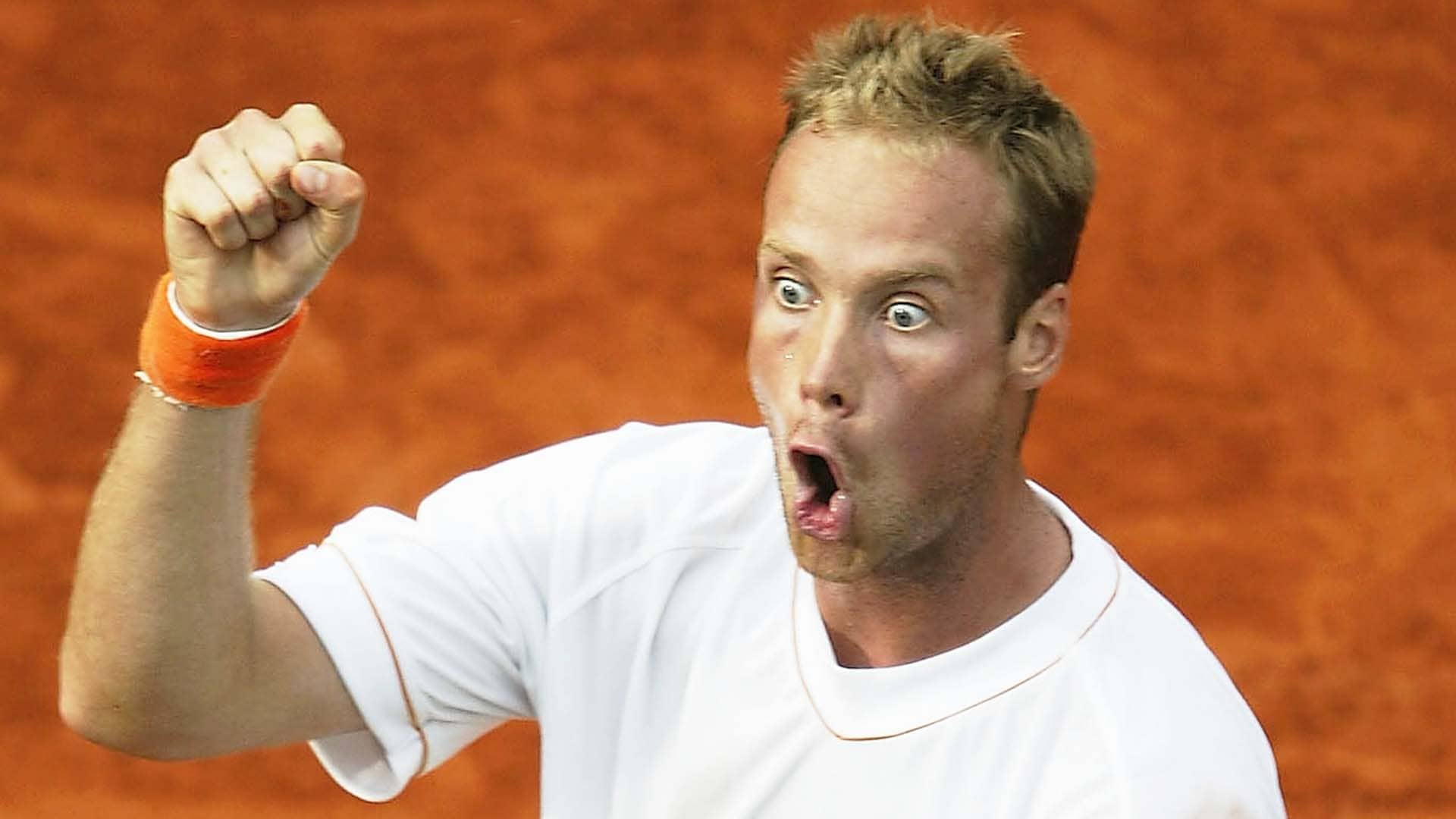It's One-Way Traffic On L’Avenue Rafael Nadal
It’s One-Way Traffic On L’Avenue Rafael Nadal
12-time champ gets more dominant deeper into matches at Roland Garros
From 2005 to 2019, Rafael Nadal has lifted 12 titles and won 93 of his 95 matches at Roland Garros. If the city of Paris dedicated a street to their adopted Spanish son, it would be apropos to make sure it went only one way.
An Infosys ATP Beyond The Numbers analysis of how Nadal performs in each of the five possible sets identifies a competitor who explodes fast out of the blocks in set one and morphs into a runaway train by set three. The data set includes players who have played a minimum of 10 matches at Roland Garros since official statistics were first recorded in 1991.
Set One
Ready, set, gone.
Facing Nadal on Paris’ terre battue is one of sport’s greatest challenges. The Spaniard does not give opponents time to get a feel for the clay, the stadium or the moment. He jumps on them immediately, attempting to end the contest before it becomes one.
Nadal has won 65.4 per cent (559/855) of games played in the opening set since his tournament debut in 2005. In 2019, the opening set scorelines in his seven matches were 6-2, 6-1, 6-1, 6-2, 6-1, 6-3 and 6-3. That is 42 games won and 13 games lost, good for a head-turning 76 per cent winning margin.
The leading five players with the highest percentage of games won in set one at Roland Garros are:
| Rank | Player | Percentage Of Games Won | Games Won/Played |
| 1 | Rafael Nadal | 65.4% | 559/855 |
| 2 | Goran Prpic | 62.4% | 53/85 |
| 3 | Jim Courier | 61.7% | 232/376 |
| 4 | Novak Djokovic | 60.8% | 474/780 |
| 5 | David Ferrer | 60.6% | 329/543 |
Set Two
Set two represents second gear as Nadal moves up another level to create a wider margin between himself and his opponents. Nadal has won 66.2 per cent (561/848) of games in the second set, showing no signs of letting up and allowing opponents an opportunity to level the match.
The leading five players with the highest percentage of games won in set two at Roland Garros are:
| Rank | Player | Percentage Of Games Won | Games Won/Played |
| 1 | Rafael Nadal | 66.2% | 561/848 |
| 2 | Damir Dzumhur | 62.6% | 57/91 |
| 3 | Oscar Hernandez | 62.5% | 60/96 |
| 4 | Bernd Karbacher | 61.8% | 94/152 |
| 5 | Arnaud Boetsch | 60.1% | 101/168 |
Set Three
With the finish line now squarely in sight, Nadal keeps ramping up the pressure, winning an astonishing 68.4 per cent (551/805) of games in set three. Opponents have to endure a fast start and a faster finish against the Spaniard. Close to 80 per cent of Nadal’s matches at Roland Garros have been decided in straight sets.
The leading five players with the highest percentage of games won in set three at Roland Garros are:
| Rank | Player | Percentage Of Games Won | Games Won/Played |
| 1 | Rafael Nadal | 68.4% | 551/805 |
| 2 | Boris Becker | 67.7% | 65/96 |
| 3 | Juan Carlos Ferrero | 62.3% | 230/369 |
| 4 | Juan Martin del Potro | 61.4% | 156/254 |
| 5 | Kyle Edmund | 61.4% | 62/101 |
Set Four
Nadal sits in fourth place with games won in the fourth set, winning a strong 64.4% (123/191). Carl-Uwe Steeb leads the pack at 70.6 per cent (12/17).
Set Five
Nadal has only been extended to five sets at Roland Garros twice, winning both times. He has won 57.7 per cent (15/26) of games in the fifth set. David Goffin is the overall leader in fifth-set games won at 78.9 per cent (30/38).
Nadal’s Five-Set Matches At Roland Garros
| Year | Round | Result | Score |
| 2013 | Semi-Final | d. Novak Djokovic | 6-4, 3-6, 6-1, 6-7(3), 9-7 |
| 2011 | First Round | d. John Isner | 6-4, 6-7(2), 6-7(2), 6-2, 6-4 |
Nadal has won an astonishing 57.5 per cent (9829/17080) of points at Roland Garros. It’s the closest thing to one-way traffic our sport has ever seen.






